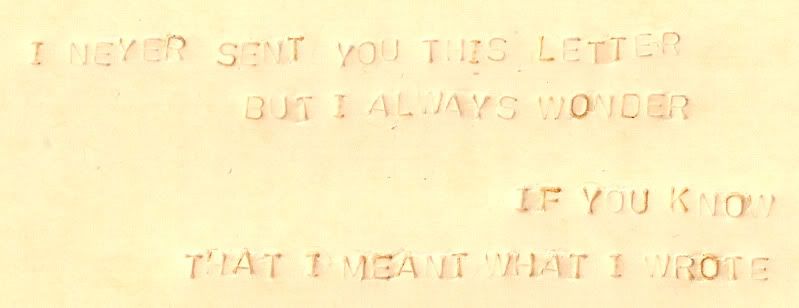The uncanny valley graph, described by Masahiro Mori, illustrates the phenomenon of being creeped out by robots and other humanlike objects. This something that I have since been really interesting in exploiting. His book, the Buddha in the Robot, has subsequently blown my mind.

This particular page made me think pretty hard about what I'm planning on doing with an art degree. In the last year, I have focused mostly on building experimental cameras and figuring out the slow process of digital rotoscoping. This has been fun and rewarding. I have learned a lot about photography and animation, but it has been slow and hasn't ended with an incredible quantity of work. In short, building my own art implements has involved a lot of failures and a lot of wondering what the point is. I guess realistically, the processes I enjoy for making images aren't totally congruent with 'gallery art' - for a while this was a bit distressing [because that is what I'm going to school for, pretty much] but after reading Mori's ideas, I feel like this kind of art is really necessary in today's art world. The idea that our work will outlive us! In a way this is a goal and a fear of many artists. We all know the story of the artist who lived his whole life completely unrecognized, gaining appreciation only after death. The idea that the engineer or inventor could have the explicit goal of creating things purely to benefit future generations is so admirable - I wonder if Leonardo da Vinci would have ever thought that his unfinished inventions would be built centuries later on television.
 Here - an example. This is me using my scanner camera, comprised of a shopping cart, pre-y2k computer, scanner, and brownie camera body. This image is a bit of a reference to Joel Peter Witkin, who I'd just met, and Sally Mann, who is a badass for using such cool big old cameras and doing wet plate photography.
Here - an example. This is me using my scanner camera, comprised of a shopping cart, pre-y2k computer, scanner, and brownie camera body. This image is a bit of a reference to Joel Peter Witkin, who I'd just met, and Sally Mann, who is a badass for using such cool big old cameras and doing wet plate photography.  Here are a few images from the scannercamera. There are quite a few, but these show some of the more interesting effects of the process..
Here are a few images from the scannercamera. There are quite a few, but these show some of the more interesting effects of the process.. Very few colors make it through the scan. These were all taken in color more, but appear mostly monochrome/grayscale.
Very few colors make it through the scan. These were all taken in color more, but appear mostly monochrome/grayscale.  Motion is distorted as the exposure takes place from one side of the picture to the other - as opposed to all at once, as with a traditional camera. Also the white blur in the center is an area of intense overexposure. This is the opposite of photo paper, interestingly enough, in that too much light on paper creates black in stead of white. This may well mean that the scannercamera image is black by default.
Motion is distorted as the exposure takes place from one side of the picture to the other - as opposed to all at once, as with a traditional camera. Also the white blur in the center is an area of intense overexposure. This is the opposite of photo paper, interestingly enough, in that too much light on paper creates black in stead of white. This may well mean that the scannercamera image is black by default.
